How To Add Support To Swaying Garden Swing Sways When Swinging

Benefits of Swinging
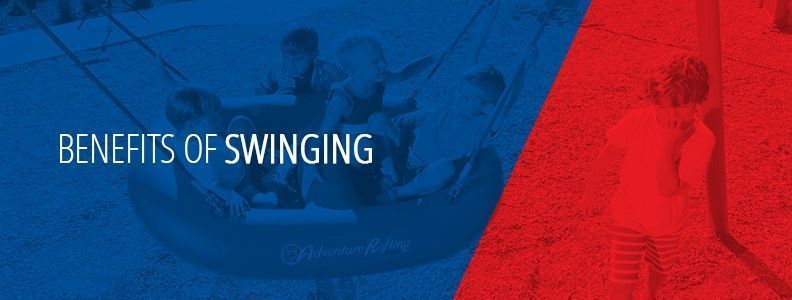
When you're a child, there is no greater feeling in the world than flying through the air on a swing. The breeze against your face and the thrill of being airborne are a cherished part of childhood in many parts of the world. But this beloved playground staple is also beneficial to your child's health and development. According to the American Academy of Pediatrics, playground equipment, including swings, has as much impact on a child's development as their time in a formal classroom setting. Swinging is more than just free entertainment — although that's a huge benefit too! It's also an excellent way for children to get the exercise their bodies and their brains need.
Swinging is fun. That's all most children are thinking about as they run toward the swings when they arrive at the park. What kids — and many parents — don't realize is that swinging has several physical benefits that can help them grow and develop.
Read on for the full list of the advantages of swinging or skip to a specific section:
- Physical Benefits of Swinging
- Cognitive Benefits of Swinging
- How Swinging Benefits Children with Special Needs
- Swings for Children with Special Needs
Physical Benefits of Swinging
Swinging on swings benefits kids by teaching them body awareness, helping with motor skills and coordination, getting them outside, and reducing stress. We'll explain the cognitive and health benefits of swinging to kids in the following sections:
1. Teaching Body Awareness
One physical benefit of swinging is improved body awareness, which is your child's understanding of the movements their bodies can and should make. How does swinging accomplish this? Within your body's joints are receptors that, when activated, signal the location of those joints. So, when your child is pumping their legs on a swing, their bodies are also taking note of their joint movement. As a child becomes more confident on a swing, you'll see them pumping harder, for longer.
Swinging also engages the vestibular system, which is located deep inside the inner ear. This system is responsible for the body's positioning in space and how it responds to the force of gravity. In other words, standing up and staying put. Because swinging is a back-and-forth motion, your body is constantly adjusting its understanding of where it's positioned, allowing your brain to process and practice understanding how to hold your body in position as gravity pushes and pulls it.
2. Motor Skills and Coordination
Swinging also helps children as they develop coordination because swinging requires children to engage multiple muscle groups at once. They must engage their abdominal muscles to stay upright in the center of the swing, and they must use their legs to keep the swing moving. Their arms are also engaged as they hold onto the ropes or chains holding the swing to its frame.
Because they are engaging their muscles while they swing, they are also exercising those muscles and making them stronger, making swinging good exercise. Stronger muscles will help them engage in other physical activities. And, of course, since they're engaging these muscle groups, they're burning energy and staying healthier than their sedentary counterparts.
Learning to pump on a swing — propelling the swing forward and back using body weight and momentum — is the best way to maximize the physical benefits of swinging, but it's not the only way. For children who are too young to learn to pump or those with special needs, swinging can still provide these physical benefits because they are still engaging a series of muscles when they sit and hold onto the sides.
Another way to get the physical benefits of swinging on a swing is found in tire swings. Because they are larger and typically used by two or three children at once, they also engage several different muscle groups at once, teaching coordination, motor skills and helping to form strong muscles.
3. Spending Time Outside
Typically swings are on playgrounds, and playgrounds are outside. The physical benefits of outdoor play in children are vast. Children who play outside get more aerobic exercise and strength training as they run, jump, push, pull and climb. Their bones and muscles are strengthened. Because of this, children who spend regular time engaging in outdoor play burn more calories, which reduces their risk of childhood obesity. We offer the generation swing and team swings to help children and parents engage on the swing together.
Additionally, children who play outside take in more Vitamin D, a nutrient essential to preventing illness and building strong bones. In fact, children who play outside are at a lower risk of developing chronic childhood illnesses.
4. Stress Relief
Most kids aren't consciously thinking about stress or the role it plays in their overall health and wellbeing. But swinging can actually help calm hyper or anxious children. Just like spending an hour in a hammock can calm an anxious adult, the back-and-forth motion of swinging can calm a child who has had a rough day or been overstimulated at school or during another activity.
Along with the physical benefits of swinging come several benefits to the brain. When your child is on that swing, there's more than just physical exercise taking place. There's a lot going on in their brain as well.
Cognitive Benefits of Swinging
The benefits of swinging for children extend to helping with social development, improving sensory skills, increasing attention span, and improving moods. We'll explain these cognitive benefits to kids in the following sections.
1. Social Development
Spending unstructured playtime on the swings and other playground equipment helps children learn to share, take turns and interact with each other. They create games together and socialize in a way that helps their brain learn how to act around other children their age. To a parent, it just looks like they're running around like crazy people. But what's actually happening is that children are practicing communicating with each other, verbalizing their ideas and interests, and learning how to work together to meet a common goal. Even when this interaction goes sour and a playground scuffle ensues, children are still learning how to handle conflict and cooperate when things don't go the way they'd planned.
How does swinging specifically do this? Think about it like this — your child arrives at the playground and heads straight for the swing set. But the swings are all occupied. Your child stands there expectantly, waiting for the moment when another child will get off the swings to head for the monkey bars or the slide. In this moment, they are practicing both patience and how to take turns. Then, a swing becomes available. Your child jumps right on, looks at the child in the swing next to theirs and says, "Betcha I can swing higher than you!" Just like that, the two children are in a race to see whose swing can go higher. This creative, child-led play has allowed them to make new friends and work together toward a common goal.
2. Improved Sensory Skills
A child who spends all of their time inside watching television only has the chance to develop two sensory skills — sight and hearing. When children play outside, they can develop and hone all seven sensory skills. This includes the senses of proprioception, the vestibular system, touch, hearing, sight, smell, and even taste. Because it requires a child's whole body and controlled movement, active play like swinging is an especially good way for children to develop their proprioceptive sense, which involves body awareness, and their vestibular sense, which involves spatial orientation and balance.
Children also use their other senses when they play outside. They touch leaves and worms and pinecones, learning what they feel like. They hear birds and planes and cars drive by. They see the beautiful trees and bushes around them. They watch their friends and develop the ability to look quickly from one person or thing to another. They smell freshly cut grass and flowers. And, yes, your child may even take a parent-approved taste of honeysuckle or a berry from a safe bush, such as a blueberry or strawberry bush.
What does all of this have to do with swinging? Kids love swinging. It's a huge draw for children. If your child is interested in swinging, then they'll be much more willing to head to a playground, go out back to play or engage in other outdoor activities beyond swinging. As they do, they'll practice engaging their senses and processing everything around them.
3. Increased Attention Span
Swinging is a great way to help children focus. In fact, it's a highly recommended activity for children who have been diagnosed with ADHD because the act of swinging helps children refocus their brain to engage in other more structured activities. It's no coincidence that elementary schools have recess and time for children to play on the playground. This act of disengaging from formal instruction and engaging in unstructured playtime helps children regain their focus, wake up their sleepy brains, and prepare to re-engage in learning as the day goes on.
In general, children who spend time outside tend to be more curious, stay with a task for a longer time, and are better at self-directed play. By encouraging your child to swing and spend time outside, you help them to develop the skills they need in the classroom and the boardroom.
4. Better Moods
Playing outside has been shown to improve a child's overall mood and wellbeing. Kids are happier when they're exposed to sunlight and fresh air. Why? Sunlight stimulates the part of the brain responsible for feelings of happiness. Sunshine does actually equal happiness! Further, people who spend time outside tend to be happier and have more positive moods than people who stay inside. Encouraging your child to play outside, including swinging, helps expose them to things that improve their mood. And who doesn't want a happier kid?
All of the benefits we've listed for swinging apply for children across the board. It's a highly beneficial activity for any child of any age. If you have a child with special needs, you may be wondering how your child fits into this picture. After all, not all children are physically able to swing on a traditional playground swing. So what are the benefits to swings for your child's unique situation?
How Swinging Benefits Children With Special Needs
All of the benefits we've listed for swinging apply for children across the board. It's a highly beneficial activity for any child of any age. If you have a child with special needs, you may be wondering how your child fits into this picture. After all, not all children are physically able to swing on a traditional playground swing. So what are the benefits to swings for your child's unique situation?
1. Sensory Benefits
Swinging is a great way to stimulate the photoreceptive and vestibular systems. The photoreceptive system is responsible for how the brain processes light taken in through the eyes. The vestibular system is located inside of the ear canal and is responsible for processing balance and the body's awareness of where it is in space. So what does that mean for someone with sensory issues?
A child with sensory issues may struggle with processing sensory input. So what does a swing do? When a child swings, their body essentially has to practice engaging all the senses at once. The light around them, the sounds of other children playing or traffic nearby, the feel of the wind on their face and the sensation of their muscles engaging as the swing moves back and forth — all of these are present when they're swinging. The more they do this, the more their brain and body can engage their senses and become more used to how each of them feels.
Over time, their brain will become more accustomed to processing all of these experiences, and a child with sensory issues will become more adept at handling them without becoming agitated.
2. Improved Attention Span
We mentioned this earlier, but for children with special needs, the impact of swinging on their attention span can be far-reaching. Because swinging stimulates so many sensory experiences at once, your child's sensory needs may be met by swinging. This means other sensory-reducing behaviors, such as fidgeting or hyperactivity, can be reduced. Because swinging also increases the blood flow to the brain, it helps children refocus their attention where it belongs. A few minutes of swinging can provide several hours worth of improved attention in a child who struggles to focus.
3. Calming Effects
Wondering why swinging is calming? Swinging is a calming motion, especially for children who are prone to meltdown and high anxiety. Swinging releases endorphins into the body, which makes children feel happier and more focused. When they feel calm and happy, they are less likely to have meltdowns or extreme temper tantrums. Even though swinging is a great way to help children feel more alert, it's also a great way to help a special needs child calm themselves before bedtime.
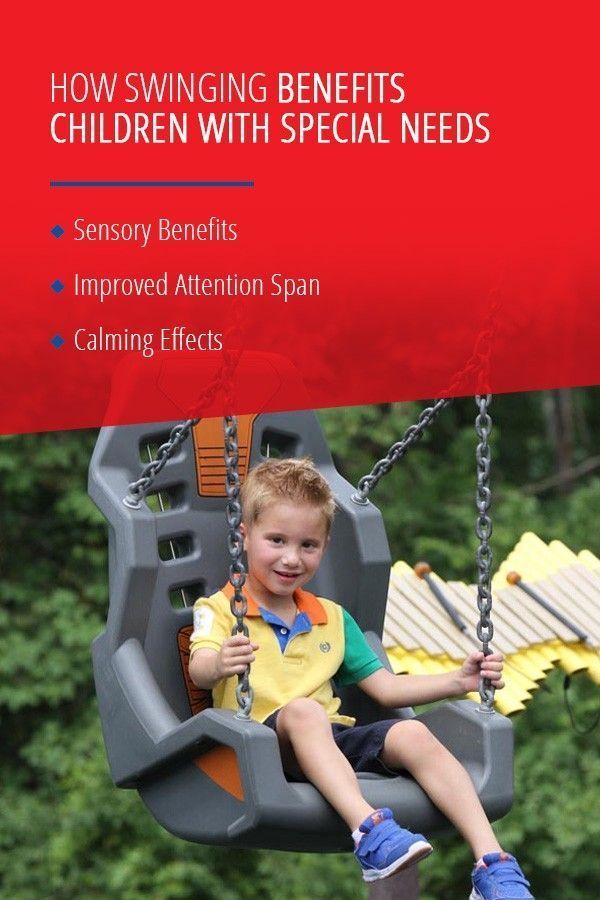
Swings for Children With Special Needs
If you have a child with special needs, your child's needs or abilities may not always line up with a traditional playground swing or public playground environment. So how can you help your child experience the benefits of swinging while still keeping them safe?
1. Sensory Swings
A sensory swing is a swing you can install at home for your child to use whenever they need it. You child can use a sensory swing to prevent meltdowns — or regain control when one has occurred. They can sit in the swing when they're struggling to focus on homework or to lessen the occurrence of sensory-reducing behaviors, such as rocking or clapping. A child can use a sensory swing simply to help them calm down if they're overwhelmed by the world around them.
2. Inclusive Swing Seats
Sensory swings are a great option, but they can be expensive, and they lack the benefits that children get from being outside and around other children. This is where an inclusive swing seat comes into play. An inclusive swing seat is a special swing that can be installed at any public playground to provide children of varying abilities with the physical, emotional and social benefits that come from swinging.
Swinging With Little Tikes Commercial
When it comes to swinging, the sky's the limit. There's much for children of all ages, stages and abilities to gain from spending time flying high. Little Tikes Commercial offers a wide variety of commercial playground swings designed for parks, daycares, schools and places of worship. All of our products are designed with the highest safety standards in mind. We design and construct each piece as if our own children were going to play on it — and they do! Our wide variety of swings are designed for mix-and-match, which means your school or community park can offer swings for children of varying ages and abilities all in one place.
Let us help you give the children in your community a place to grow. Browse swings from Little Tikes Commercial today.

Contact Us Today
How To Add Support To Swaying Garden Swing Sways When Swinging
Source: https://littletikescommercial.com/blog/benefits-of-swinging/
Posted by: crismanlair1941.blogspot.com

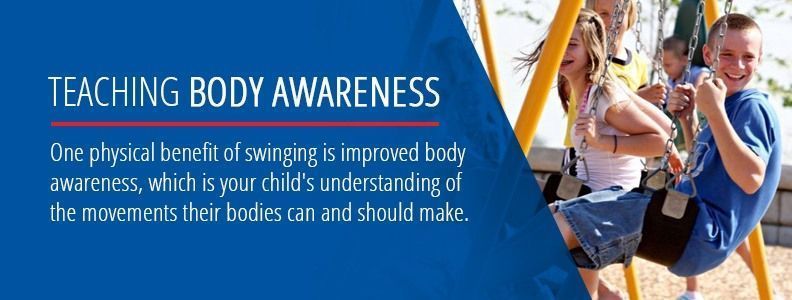
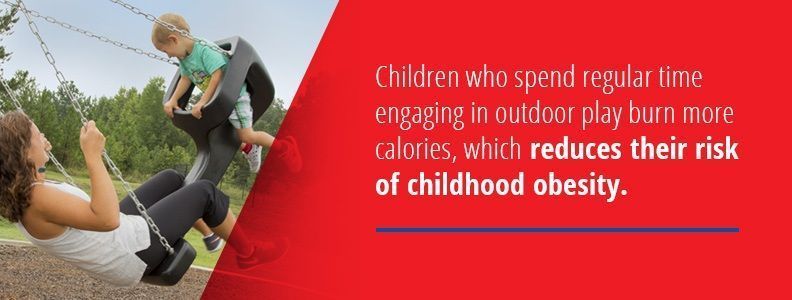
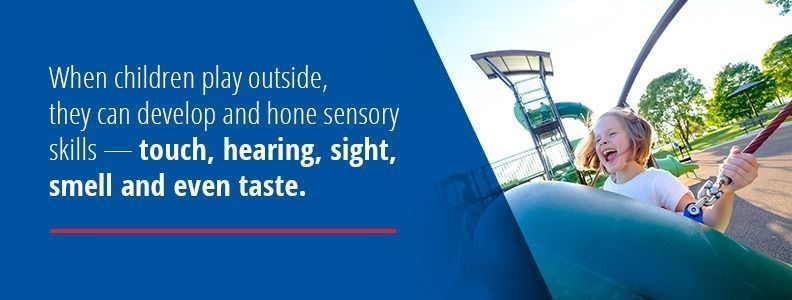
0 Response to "How To Add Support To Swaying Garden Swing Sways When Swinging"
Post a Comment